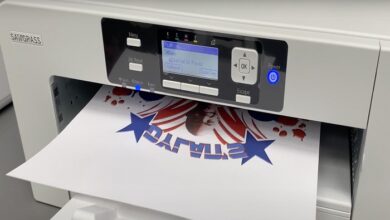The Future of Technology after 2TB Clark: A Comprehensive Review

In the world of technology, the pace of advancement has been unprecedented, and with each passing year, we witness new technological breakthroughs that revolutionize the way we live, work, and interact with each other. One such breakthrough that has recently caught the attention of tech enthusiasts is 2TB Clark, a new type of solid-state drive that has the potential to transform the way we store and access data. In this article, we will delve deeper into the world of technology after 2TB Clark and explore its potential impact on our lives.
Introduction to 2TB Clark
2TB Clark is a new type of solid-state drive (SSD) that has been developed by a team of researchers at the University of Alberta. The drive has the potential to store up to 2 terabytes of data, making it one of the largest SSDs currently available in the market. What sets 2TB Clark apart from other SSDs is its ability to store data in a way that is both faster and more efficient.
How 2TB Clark Works
2TB Clark works by using a technique called “atomic-level control,” which allows data to be stored in a much denser and more organized way than traditional SSDs. This means that not only can more data be stored, but it can also be accessed much faster, making it an ideal choice for applications that require high-speed data transfer.
Impact on the Industry
The introduction of 2TB Clark is expected to have a significant impact on the technology industry as a whole. With its ability to store more data and transfer it faster, it has the potential to transform the way we work, particularly in fields such as data analysis, artificial intelligence, and machine learning.
Applications of 2TB Clark
2TB Clark has a wide range of potential applications, ranging from the storage of large amounts of data in data centers to the creation of faster and more efficient gaming computers. Other potential applications include the use of 2TB Clark in autonomous vehicles, where it could be used to store large amounts of sensor data in real-time.
Advantages of 2TB Clark
One of the main advantages of 2TB Clark is its ability to store large amounts of data in a way that is both faster and more efficient than traditional SSDs. This means that not only can more data be stored, but it can also be accessed much faster, making it an ideal choice for applications that require high-speed data transfer. Additionally, because 2TB Clark uses less power than traditional SSDs, it has the potential to be more environmentally friendly.
Challenges and Limitations of 2TB Clark
Despite its many advantages, 2TB Clark still faces a number of challenges and limitations. One of the main challenges is the high cost of manufacturing, which may limit its widespread adoption in the near future. Additionally, because 2TB Clark is still a relatively new technology, there is still much that needs to be learned about its long-term reliability and durability.
Future Developments in Technology
The introduction of 2TB Clark is just one example of the many advancements that we can expect to see in the world of technology in the coming years. From artificial intelligence and machine learning to quantum computing and the internet of things, the future of technology is sure to be an exciting one, filled with endless possibilities and potential breakthroughs.
Conclusion
In conclusion, 2TB Clark represents a significant breakthrough in the world of technology, with the potential to revolutionize the way we store and access data. While there are still challenges and limitations that need to be overcome, the future of technology after 2TB Clark is sure to be a bright one, filled with endless possibilities and opportunities for growth and advancement
FAQs
- What is 2TB Clark? 2TB Clark is a new type of solid-state drive (SSD) that has been developed by a team of researchers at the University of Alberta. The drive has the potential to store up to 2 terabytes of data, making it one of the largest SSDs currently available in the market.
- How does 2TB Clark work? 2TB Clark works by using a technique called “atomic-level control,” which allows data to be stored in a much denser and more organized way than traditional SSDs. This means that not only can more data be stored, but it can also be accessed much faster, making it an ideal choice for applications that require high-speed data transfer.
- What are the potential applications of 2TB Clark? 2TB Clark has a wide range of potential applications, ranging from the storage of large amounts of data in data centers to the creation of faster and more efficient gaming computers. Other potential applications include the use of 2TB Clark in autonomous vehicles, where it could be used to store large amounts of sensor data in real-time.
- What are the advantages of 2TB Clark? One of the main advantages of 2TB Clark is its ability to store large amounts of data in a way that is both faster and more efficient than traditional SSDs. This means that not only can more data be stored, but it can also be accessed much faster, making it an ideal choice for applications that require high-speed data transfer. Additionally, because 2TB Clark uses less power than traditional SSDs, it has the potential to be more environmentally friendly.
- What are the limitations of 2TB Clark? Despite its many advantages, 2TB Clark still faces a number of challenges and limitations. One of the main challenges is the high cost of manufacturing, which may limit its widespread adoption in the near future. Additionally, because 2TB Clark is still a relatively new technology, there is still much that needs to be learned about its long-term reliability and durability.




